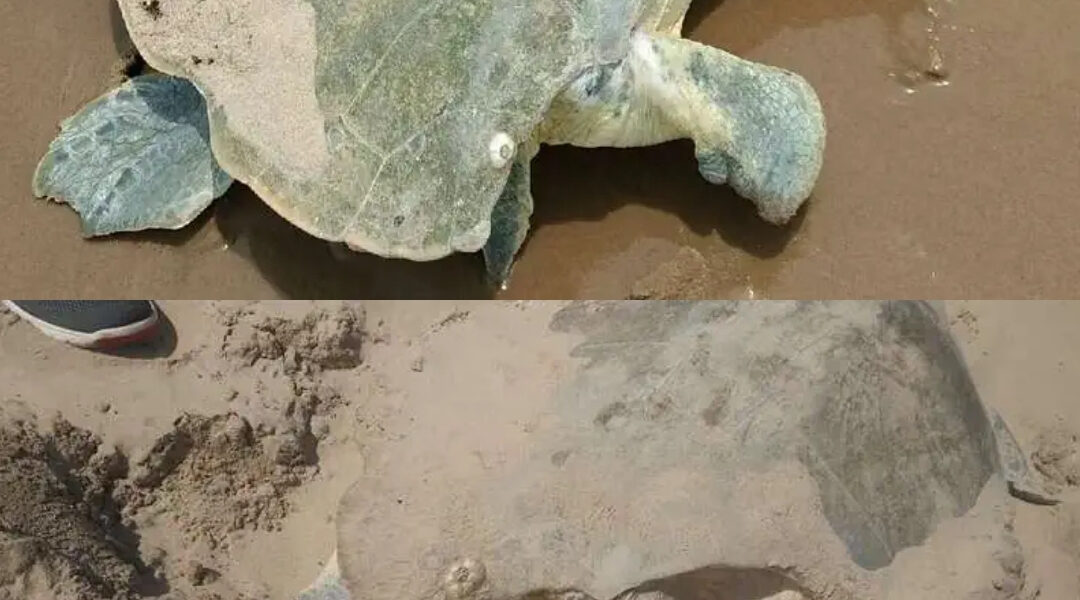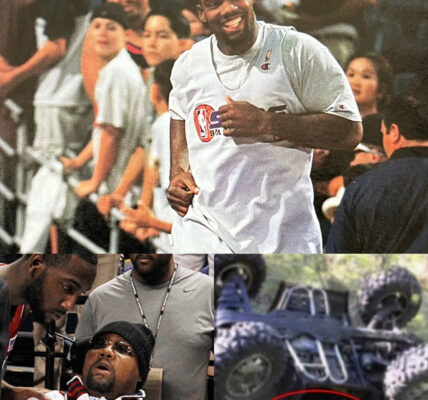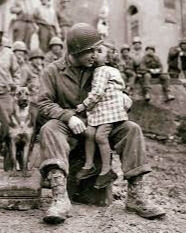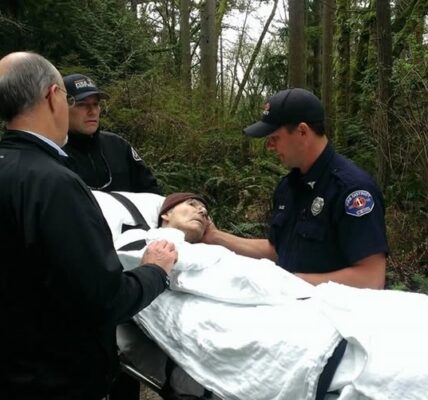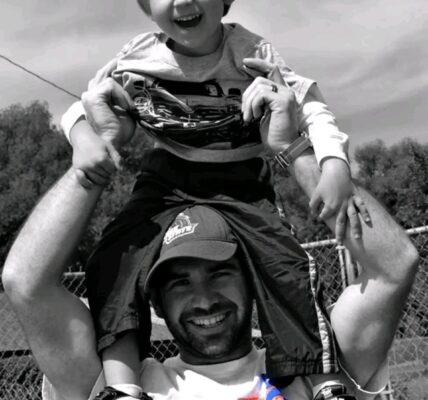It began with a phone call — the kind that makes you pause and listen twice. Two days earlier, Jeff George, executive director of Sea Turtle, Inc., had been going through his usual workday when someone on the other end of the line spoke in an urgent voice: “There’s a sea turtle on the beach — she’s badly injured. You need to see this.”

George had a feeling he already knew who it was.
Just over a month before, on that same stretch of sand along South Padre Island, a female Kemp’s ridley sea turtle had come ashore to nest. She had labored through the soft dunes, dug a deep hollow, and laid 85 eggs before vanishing back into the ocean. One of George’s interns had captured a single photo before she disappeared — a photograph of strength, of instinct, of ancient persistence.
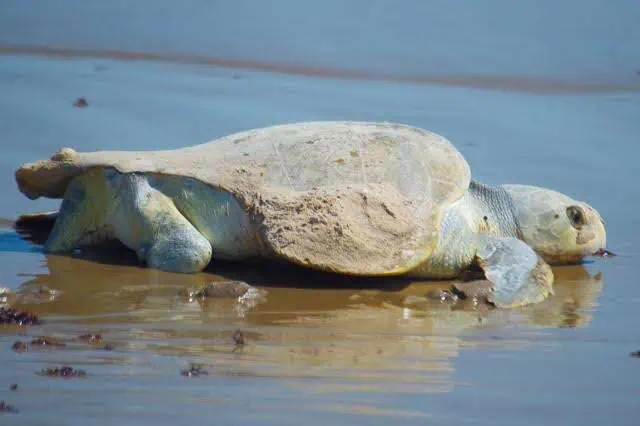
Now, that same turtle was back — and this time, her shell bore a terrible wound.
A massive section was missing from her carapace, a jagged piece torn away, leaving her vulnerable. “I knew immediately it was her,” George said later. “But this time, she was carrying scars — and they told a story of survival.”
The exact cause of the injury was impossible to determine. It could have been the bite of a shark, a boat propeller, or an attack from a large fish during her early years. “Turtles are small and defenseless when they’re born,” George explained. “This could’ve happened early in her life — or even later from a predator.”
What mattered most was not how she was hurt, but what she chose to do next.

Despite the wound that made every movement difficult, the turtle had come back to nest again. She hauled herself up the beach, inch by inch, her body moving unevenly through the sand. “She seemed to limp,” George observed. “If a turtle could limp, that’s exactly what she did. She kind of walked sideways.”
Watching her, George was struck by her determination. The injury that might have stopped most animals hadn’t stopped her — not from coming ashore, not from trying to create new life.
But the odds were against her. The spot she chose was compacted and hard, making it difficult for her to dig deep enough. With her damaged flipper, every scoop of sand was a struggle. She tried, paused, tried again. George could see the exhaustion in her movements — but also her refusal to quit.

In a rare decision, he stepped in to help. “I called out to the team,” he said. “She needed assistance, and I wasn’t going to let her fail.” Kneeling beside her, George used his hands to loosen the sand. “As she tried to dig with her short stub of a flipper, I dug for her,” he said.
Man and turtle worked side by side, one helping the other in a moment that felt both ancient and new. Eventually, the nest was ready. The mother turtle began to lay — one egg after another, 62 in all — each one a tiny, fragile sphere of hope.
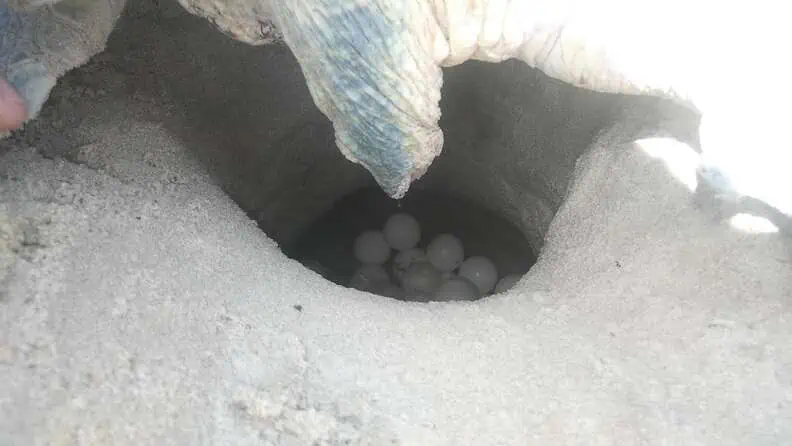
When she was done, she used her remaining strength to cover the nest. Her flippers moved rhythmically, sweeping sand over the eggs in the same way her ancestors had done for millions of years. Then, exhausted but resolute, she turned back toward the ocean.
She paused once at the water’s edge — just long enough for the sunlight to glint off her battered shell — before sliding into the surf and vanishing beneath the waves.
“She won’t be here when the hatchlings emerge,” George said softly, watching her go. “But we’ll make sure her babies make it to the sea.”
The team at Sea Turtle, Inc. carefully relocated the eggs to a protected hatchery where they could incubate safely, away from predators and the unpredictable tides. “They’re in the hatchery now,” George confirmed, “and they’re incubating beautifully.”
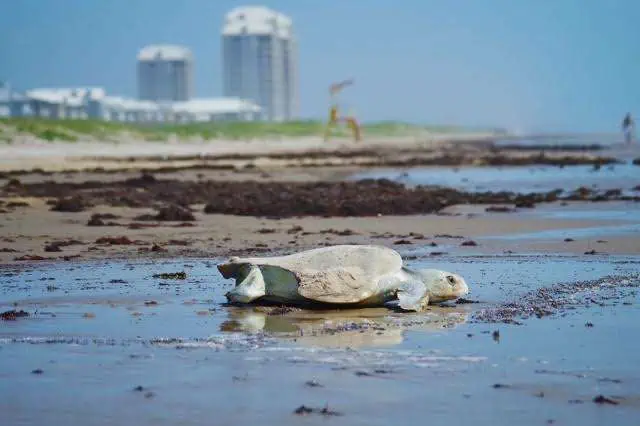
Kemp’s ridley turtles, the species to which she belongs, are the rarest and most endangered sea turtles in the world. Once numbering in the hundreds of thousands, their population has plummeted due to habitat loss, pollution, and fishing nets that trap them beneath the waves. Every nest, every egg, and every mother matters deeply to their survival.
George believes this nest was likely her third of the season — a sign of remarkable resilience. “The first nest usually has over a hundred eggs,” he explained. “So this might have been her last for the year — or maybe her body, because of the injury, could only produce so many. Either way, it’s extraordinary that she came back.”
When asked what he felt watching her disappear into the ocean, George didn’t hesitate. “Awe,” he said. “Pure awe. Sea turtles have this incredible ability to survive and keep doing what they’re meant to do. She’s living proof of that.”
For him, the encounter was more than an act of conservation — it was a glimpse into something profound. “She is a testimony to endurance,” George reflected. “To strength. To the power of instinct and will.”
Somewhere in the warm waters beyond the surf, that scarred mother swims again — her body imperfect, her spirit unbroken. Her offspring will hatch soon, and when they do, they’ll rush toward the ocean she calls home — carrying within them the same fierce will that kept their mother alive.
She may never see them, but her legacy will live on with every small flipper that touches the sea.
